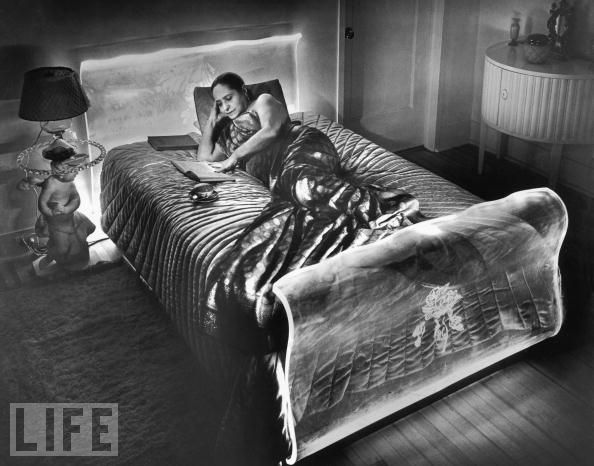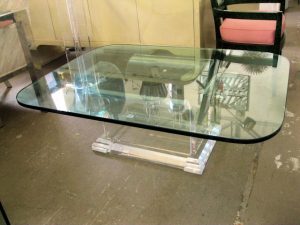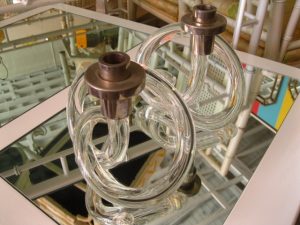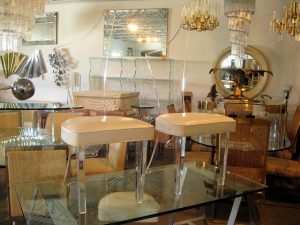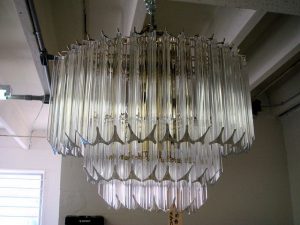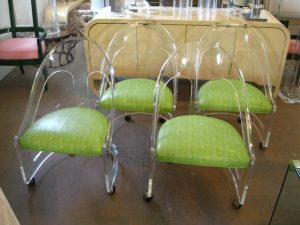Acrylic
The synthetic polymer polymethyl methacrylate (acrylic) was developed in 1928. While most acrylic items are often referred to as lucite or plexiglas, Lucite is the brand name of the polymer developed by DuPont and Plexiglas is the brand name of the Rohm & Haas polymer. Each manufacturer calls it by their own trade name such as: Lucite, Plexiglas, Polycast, Perspex, Acreylex, Acrylite, among others. Acrylic was used in construction of war materials in the 1940s and flourished in fashion jewelry and handbag designs in the 1940s and 50s. While there were some early designs in furniture and accessories, acrylic became extremely popular in the 1960s and 70s.
Helena Rubinstein’s acrylic bed via Life CIRCA 1941
Acrylic use in furniture, lighting, and accessories became FAB in the 1960s and 70s thanks to creative and innovative designers including Neal Small, Charles Hollis Jones, Dorothy Thorpe, and Mark Eckman for Karl Springer, among many others.
Acrylic is a beautiful and versatile material. It is naturally transparent and clear, although it can be tinted. Acrylic is much clearer than glass and does not have a green edge like glass, providing a clean look. While glass reflects light, the light travels through acrylic giving the visual impression that no space is lost. Acrylic pieces demand excellent design and fabrication because it will show every flaw. Since its beginnings in early Mid-Century design, acrylic has been constantly reintroduced.
CIRCA WHO FAB Finds!
Jeffrey Bigelow Coffee Table Base with glass top
Pair of Dorothy Thorpe Candle Holders
Set of 4 High Back Chairs
3 tier Chandelier
Set of 4 Spoon Chairs
If you have notes to share on this topic send us your comments:)
